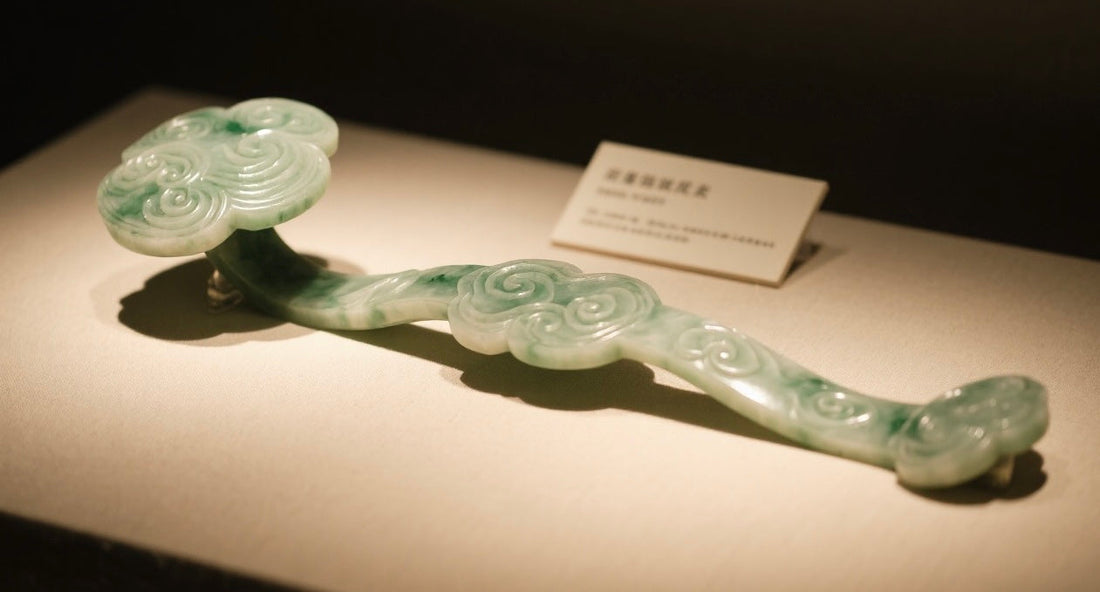
Jadeite Across Cultures – From Imperial China to Modern Spirituality
As Western interest in “energy crystals”, “chakra balance”, and “spiritual protection” continues to surge, one ancient gemstone quietly commands reverence across time and cultures: jadeite.
Rooted in Chinese imperial history and increasingly embraced by today’s mindfulness seekers, jadeite is more than a beautiful green stone—it is a cross-cultural symbol of power, healing, and spiritual integrity.
✦ A Stone of Emperors and Ancestors
In Imperial China, jade was not merely an ornament—it was moral philosophy made tangible. Confucius likened jade’s smoothness and glow to human virtue: compassion, justice, wisdom, and courage.
Jadeite, the rarer and more translucent form of jade, was especially prized during the Qing dynasty. “Imperial Green” bangles and pendants were exclusive to the royal court, believed to protect vitality and harmonize the body’s internal qi (life force).
Meanwhile, ordinary families used jade amulets as tokens of protection—carved with symbols of longevity, wealth, and peace. Wearing jade was a way to stay connected to one’s ancestors, to values, and to heaven itself.
✦ Jadeite in Buddhism, Feng Shui, and Energetic Healing
Across centuries and borders, jadeite has served as a spiritual medium. In Tibetan Buddhism, jadeite is used to carve Avalokiteshvara (Guanyin), Medicine Buddha, and other deities—inviting compassion, clarity, and karmic purification.
In Feng Shui, jadeite balances the five elements:
- Green jade nurtures wood energy—growth, renewal, emotional healing.
- Yellow jade enhances earth—abundance, grounding, security.
- Black jade wards off negative chi—absorbing harmful energy from people or places.
Sound familiar? These principles echo Western conversations around “energy protection crystals”, “chakra alignment”, and “cleansing rituals”—all trending terms in recent searches.
In fact, jadeite could be called the original energy stone. While many now search for amethyst, selenite, or obsidian, jadeite has long been used to balance mood, boost longevity, and even support fertility—especially in women’s traditions.

✦ Why Western Mindfulness Culture Is Turning to Jadeite
A scroll through current Google Trends shows rising curiosity around topics like:
- “chi energy”
- “spiritual healing stone”
- “zen grounding”
- “crystal vs jade meaning”
Jadeite fits squarely into these themes—but remains underrepresented in the West. That is changing.
In today’s burnout culture, many are moving away from mass-produced items in favor of objects that hold intention, origin, and meaning. Jadeite—formed over millions of years in the mountains of Myanmar—offers just that.
Whether worn as a minimalist bangle, a carved pendant of Buddha, or a custom talisman, jadeite becomes a sacred touchpoint—a way to hold stillness in a restless world.
✦ Final Thoughts
From Chinese emperors to Tibetan monks, from Feng Shui masters to Gen Z spiritualists, jadeite bridges eras and intentions. It is:
- A symbol of legacy and protection.
- A stone of energy and subtle strength.
- A cultural artifact that transcends trend.
As the West continues its search for grounding, clarity, and authentic wellness, jadeite is no longer just a hidden gem—it’s becoming a spiritual cornerstone.
